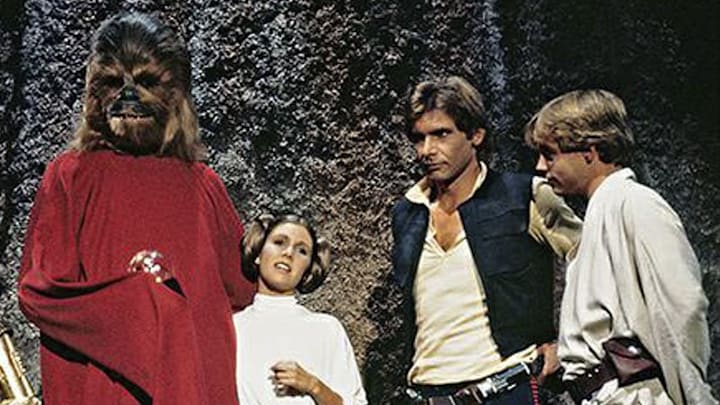In Return of the Jedi, Han Solo famously walks away from the Battle of Endor alive, a little more of a scruffy nerfherder than usual, maybe, but very much not dead. His survival, though, was never a sure thing. In fact, Harrison Ford lobbied hard for Han Solo to meet his heroic end.
In an interview with ABC News, Ford reflected on his initial hope that Han would die during ROTJ.
“I thought it would be a good idea at the time… To give the character some gravitas, to make it a bit more weighty.”
Ford believed Han’s death would raise the emotional stakes of the finale and allow the saga’s conclusion to feel more meaningful. After all, Luke would triumph, Vader would be redeemed, but where was the sacrifice? Han’s death, Ford argued, could have offered a poignant reminder of what was lost along the way.
Lawrence Kasdan, who co-wrote The Empire Strikes Back and Return of the Jedi, agreed with Ford. He told author J.W. Rinzler in The Making of Return of the Jedi that he felt Solo's arc lacked a compelling emotional journey in the final installment.
“I thought Han should die," he said. "I thought he ought to sacrifice himself for the other two. I also felt someone had to go. It’s war; you should lose someone.”
Kasdan is right, of course. It isn’t likely that all of the heroes would make it out of an all-out intergalactic war, and yet, that’s what George Lucas wanted.
Concerned that killing Han would hurt merchandising (Solo was a massive hit with kids), Lucas vetoed the idea. According to Kasdan, Lucas “didn’t want anything bad to happen to anyone.” The third film would end on a high note, with teddy bears dancing and all our heroes intact.
That commercial instinct paid off. Return of the Jedi was a box office smash, grossing $374 million during its initial theatrical run and becoming the highest-earning film of 1983. Nonetheless, the storytelling tradeoff remains a source of debate.
This wasn’t the first time Ford’s future in the Star Wars franchise was in flux. When everyone’s favorite smuggler was frozen in carbonite at the end of The Empire Strikes Back, it was a backup plan more than a plot point. Ford had only signed a two-film deal and hadn’t committed to Jedi yet. According to Empire of Dreams, Lucas and the team used the carbonite scene as a way to hedge their bets in case Han Solo couldn’t return.
It’s wild to think that one of Star Wars’ most iconic images — Han frozen mid-scream — was as much a contract clause as it was a creative choice.
Ford, ever the contrarian, never viewed himself as the saga’s centerpiece. He was vocal about not wanting to return for The Force Awakens either, and only signed on with the promise that Han would finally get his death scene.
In 2015, Ford’s macabre dream finally came true. Han Solo met his end at the hands of his son, Kylo Ren, bringing Ford’s long-standing request full circle.
“I think it’s a fitting use of the character. I’ve been arguing for Han Solo’s demise for about 30 years,” he quipped during a Jimmy Kimmel Live appearance.
Had Lucas approved the idea, Han might’ve died early in Return of the Jedi, possibly during the raid on the Death Star or even before the Ewok village scenes. That would've left Leia heartbroken, Luke more isolated, and the original trilogy’s ending far more bittersweet.
Would it have been better storytelling? Maybe. Maybe not. But it certainly would’ve deprived fans of some of Solo’s most memorable lines, and of seeing him awkwardly nod along to Ewok drum music, so I think we can all agree things played out just like they were supposed to.
